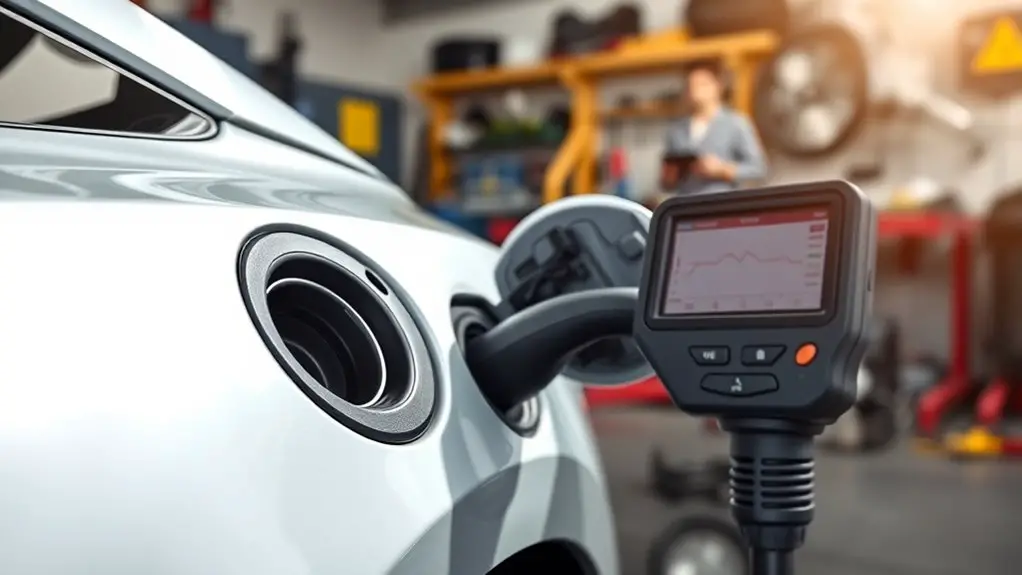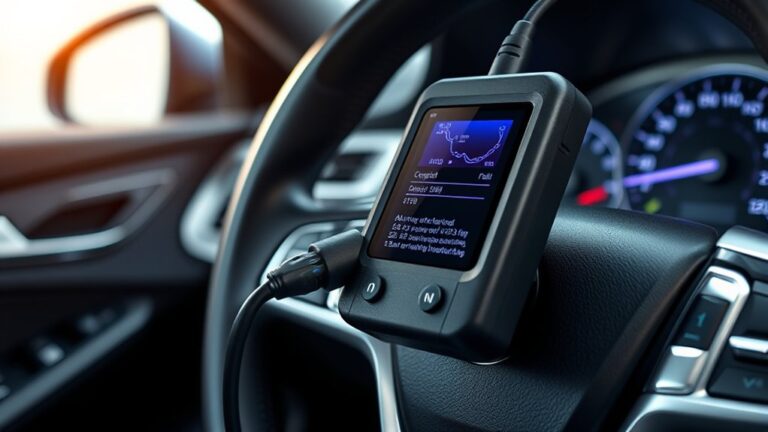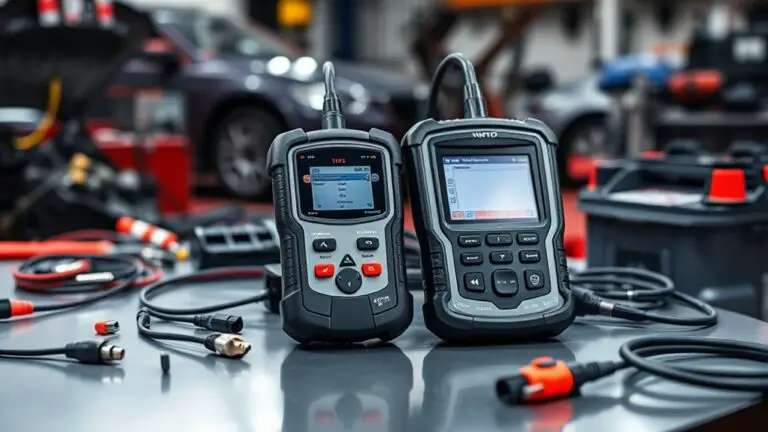How to Diagnose Reduced EV Range in a Battery EV Powertrain
You diagnose reduced EV range by systematically comparing predicted and actual energy use, isolating parasitic loads, battery health, and thermal effects with data-driven checks. Start with a quick symptom audit—tire pressure, HVAC draw, and payload—then review energy metrics like SOC, internal resistance, and efficiency flags. Check battery health and temperature history, plus thermal management activity. Look for persistent range deltas beyond normal aging. If issues persist, you’ll uncover deeper causes and next steps as you continue.
Understanding the Range Gap: Core Concepts
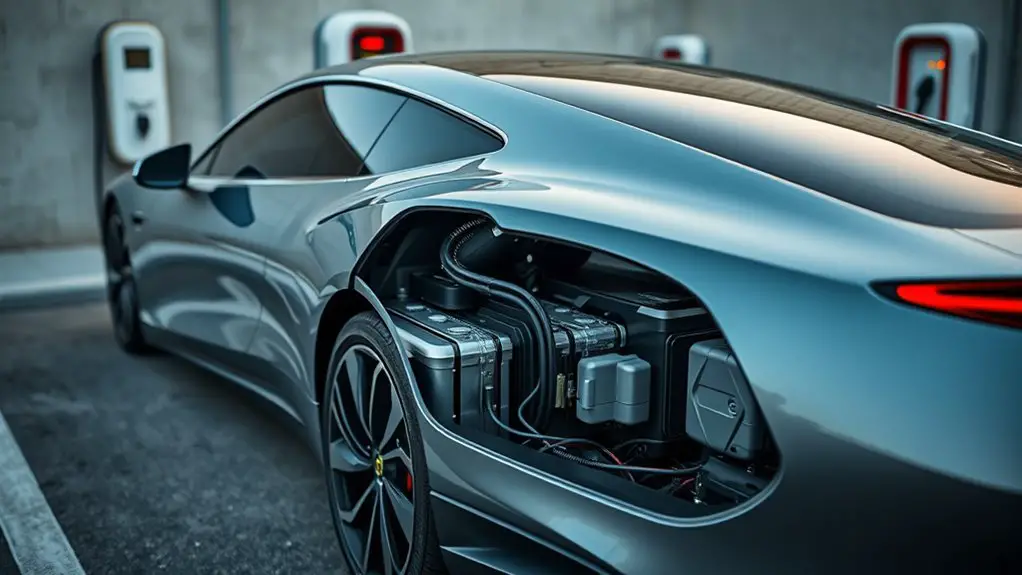
The range gap represents the difference between an EV’s estimated ideal range (as shown by the vehicle’s display or EPA/WLTP ratings) and the actual, real-world range achieved under typical driving conditions. You’ll assess this gap by aligning labeled specifications with measured performance across common use cases, then isolating contributing factors. Efficiency metrics—consumption rate, energy recovery, and drivetrain losses—form the backbone of a data-driven diagnostic. Temperature, terrain, speed profile, and accessory load systematically modulate usable energy, so you’ll quantify their impact with repeatable tests and logged data. Understanding why the gap opens enables targeted energy conservation, the practical antidote to range anxiety. You’ll compare predicted versus observed ranges under identical test cycles to establish baseline variance and identify outliers. Maintain measurement discipline, document environmental context, and use trend analysis to forecast performance shifts over battery aging. This approach empowers you to set realistic expectations, optimize driving behavior, and preserve freedom without sacrificing reliability.
Quick Symptom Checks You Can Do Today
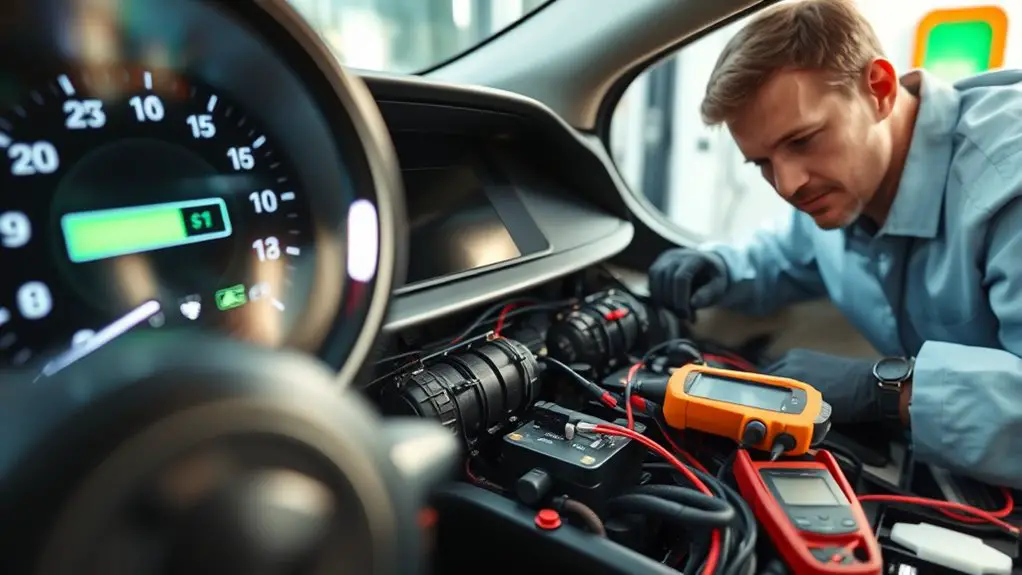
Have you checked for common, quick drivers of reduced EV range that you can validate in minutes? You can perform a focused symptom checklist to isolate factors that routinely mislead range estimates. This section emphasizes fast, actionable checks and documented observations, not theory alone, to support data-driven decisions and maintain driving freedom.
Have you checked quick drivers of reduced EV range with a focused, data-driven checklist?
1) Check tire pressure and rolling resistance: underinflation or high resistance consistently reduces range, even with light throttle.
2) Review HVAC usage and battery preconditioning: aggressive climate control or preheating drains range noticeably in cold or hot conditions.
3) Inspect driving style and weight: frequent rapid acceleration, high-speed cruising, and excess cargo lower efficiency in predictable patterns.
4) Verify software states and energy reporting: miscalibrated displays or recent updates can produce optimistic or pessimistic range readouts; log anomalies.
This symptom checklist facilitates quick fixes you can implement now, aligning practical checks with precise data-driven reasoning.
How Battery Health Impacts Real-World Range
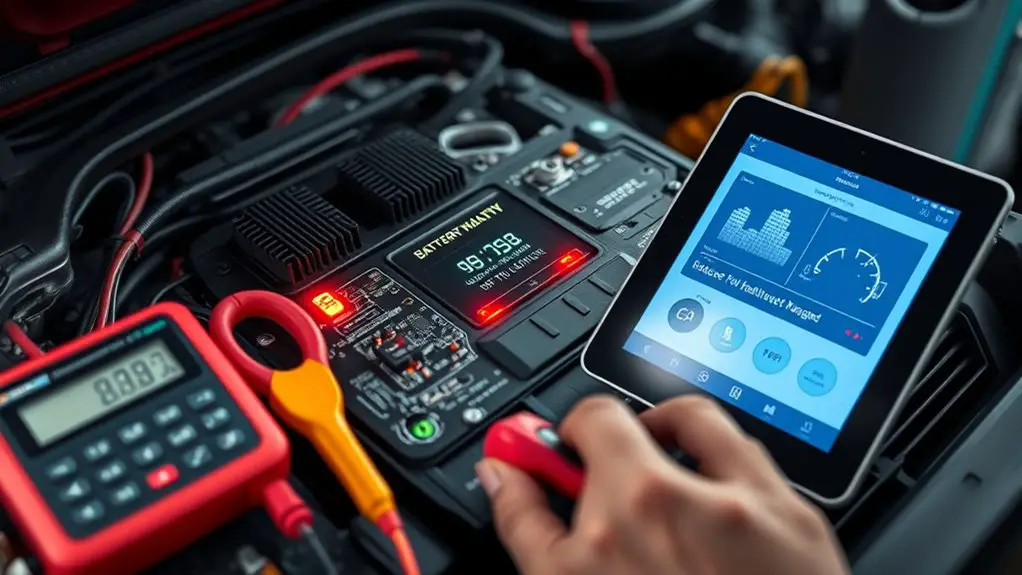
Battery health is a primary determinant of real-world range because usable energy capacity and power delivery decline as cells age. You’ll notice shorter trips and more frequent charging as battery degradation progresses, even if your gauge says similar state of charge. Capacity loss reduces usable energy per cycle, meaning the pack stores less energy for the same voltage window, which directly compresses range you can extract under typical driving. Heuristic rules show that mid-life cells often exhibit nonlinear degradation, where high-rate demand or deep discharge accelerates loss. You should track both gross capacity metrics and effective energy during representative driving, not just nominal specs. Temperature, charge protocol, and calendar aging influence the rate of battery degradation, but you’ll see the impact most in real-world range under acceleration, hill climb, and sustained highway speeds. By quantifying degradation progression, you can diagnose if range reductions stem from health rather than usage patterns or external factors, enabling targeted management strategies for preservation of capacity loss.
The Role of Thermal Management in Efficiency
Thermal management directly affects efficiency by modulating battery temperature, which in turn influences energy losses from internal resistance and charge/discharge dynamics. You’ll consider how Thermal Charge Effects shift the ideal operating window, the need to maintain the Ideal Temperature Range for consistent performance, and how Cooling System Demand scales with ambient conditions and driving load. This sets the stage for data-driven comparisons of cooling strategies, temperature control accuracy, and their impact on real-world range.
Thermal Charge Effects
Thermal charge effects considerably influence EV range by altering battery impedance, capacity, and power delivery under varying ambient and operating temperatures. You’ll see impedance rise with cold, capacity fade at extremes, and curtailed peak power during hot charging, all reshaping range. By tracking thermal conductivity and heat dissipation pathways, you identify bottlenecks that throttle performance under real-world load profiles. Systematic monitoring reveals how transient temperatures influence state-of-charge sensing and voltage sag, tightening control loop precision and minimizing surprises on the road.
- Analyze how ambient temp shifts affect impedance and capacity metrics.
- Quantify thermal conductivity routes that carry heat away from cells.
- Assess heat dissipation efficiency during high-current charging.
- Correlate temperature excursions with observed range deviations.
Optimal Temperature Range
Ideal temperature range is the sweet spot where system efficiency is maximized and losses from resistance, degradation, and parasitic loads are minimized. You assess the ideal temperature band for the powertrain, balancing battery chemistry, motor windings, and inverter heating. Data show that operating within this range reduces internal resistance, preserves cycle life, and stabilizes parasitic draw, improving overall range. You implement continuous temperature monitoring and correlate it with performance metrics such as specific energy and torque response. You prioritize conditions that support ideal charging, avoiding extremes that provoke voltage sag or current throttling. Systematic checks reveal deviations, enabling targeted control actions: preconditioning, duty-cycle tuning, and thermal load forecasting. By maintaining this discipline, you optimize efficiency while preserving freedom to operate across diverse climates and driving profiles.
Cooling System Demand
Efficient cooling requires matching the thermal load to the system’s capacity to shed heat, preventing temperature excursions that raise parasitic losses and degrade performance. You’ll evaluate how coolant efficiency and thermal insulation interact with heat rejection pathways, quantifying drag on range. System demand should be parsed into steady-state and transient components to identify misalignment with the powertrain’s cooling loop.
1) Assess coolant efficiency under varying ambient and load conditions, noting pump, fan, and valve duty cycles.
2) Quantify thermal insulation effectiveness across the battery pack and fluid channels, correlating insulation gaps to heat leak.
3) Compare radiator and condenser duty with actual heat rejection versus calculated needs.
4) Integrate thermal models with real-world data to flag excursions that spike parasitic losses.
Reading Onboard Diagnostics and Energy Metrics
Reading onboard diagnostics and energy metrics provides a data-driven view of an electric vehicle’s health and performance, enabling you to identify why range is reduced. You’ll systematically collect battery metrics from the vehicle’s ECU and energy management unit, focusing on state of charge, internal resistance, and cell balancing status. Use diagnostic tools to extract fault codes, pack temperature distribution, and powertrain efficiency flags, then correlate them with instantaneous current, voltage, and SOC decay curves. Compare rated vs actual energy throughput under controlled conditions to reveal parasitic loads and auxiliary system demand. Track coulomb counting accuracy, voltage sag during high-load events, and thermal gradients across modules to assess thermal management effectiveness. Document trends, not isolated spikes, and prioritize changes with the largest impact on usable range. With disciplined data collection and repeatable inspection paths, you can diagnose root causes and quantify improvements, guiding maintenance and firmware adjustments without guesswork.
Real-World Driving vs. Rated Range: What Stays Constant
Real-world driving often yields a different range outcome than the rated figure, but the factors that stay constant are the vehicle’s fundamental energy balance and losses. You measure the same core parameters: motor efficiency, drivetrain loss, and auxiliary loads, while external conditions modulate the result. The key is to separate real world variables from the nominal rating to diagnose delta accurately.
Real-world range differs, but core energy balance and losses stay constant in measurement.
- Real world variables versus rated performance: how ambient temp, wind, and road grade alter energy expenditure without changing the energy balance baseline.
- Core loss channels: fixed parasitic loads, constant drivetrain inefficiency, and powertrain efficiency limits under typical operating windows.
- Energy balance stability: the battery’s usable energy pool and its thermodynamic state influence runtime consistency.
- Predictive alignment: how SOC trends and energy recovery expectations map to the rated range under steady-state assumptions.
Common Myths That Skew Perceived Range
Common myths about perceived range arise from simple biases in how we measure and compare EV performance. You’ll see how thermal losses, gap between real-world and ideal ranges, and the effects of battery aging can skew expectations if not properly accounted for. This discussion frames these factors with data-driven metrics to separate misperception from material limits.
Misunderstood Thermal Losses
Thermal losses in EVs are frequently misunderstood and can create a misleading picture of range, especially when drivers focus on instantaneous energy use rather than how temperature and heat management affect usable capacity over time. You’ll see that losses aren’t just “driving hard” or “cold starts”—they’re governed by physics: heat flows, storage, and recovery rates. The key is separating transient spikes from sustained degradation in usable energy. System design choices, like thermal conductivity and insulation materials, determine how much energy is diverted to warming or cooling versus propulsion. Quantifying these effects improves range estimation under varying climates and duty cycles. Understanding fundamentals helps you optimize operation, maintenance, and battery aging.
- Heat flow pathways and steady vs. transient losses
- Impact of thermal conductivity on cooling demand
- Role of insulation materials in minimizing energy bleed
- Temperature setpoints vs. driver comfort trade-offs
Real-World Vs Ideal
Battery range estimates often differ between lab-tested, idealized data and what you observe on the road, and this gap isn’t a flaw in measurement—it’s a consequence of real-world variability. Real-world conditions introduce dynamic factors that reduce observed range relative to ideal performance. You should quantify each influence: ambient temperature, driving style, acceleration demand, terrain, and auxiliary load. System efficiency shifts with current, state of charge, and thermal state, so a single nominal range figure misses nuance. Compare on-road energy use to standardized cycles while documenting deviations, then translate results into practical estimates for trip planning. By separating real world conditions from ideal performance, you avoid myths that misattribute loss to battery aging or vehicle faults, preserving a truthful, data-driven diagnostic framework with freedom to act.
Battery Aging Impact
Although aging is real, many perceived range losses are misconstrued by myths about battery wear; distinguishing true degradation from expectation is essential for accurate diagnostics. You’ll map aging to measurable metrics, separating battery lifespan impacts from transient conditions. Data-driven checks reveal how performance degradation manifests under load, temperature, and duty cycle, avoiding overinterpretation of simple range changes. By benchmarking capacity fade, internal resistance drift, and state-of-health trends, you gain a reliable baseline for remaining range. This clarity helps you diagnose whether aging is the primary limiter or if other factors dominate. Use systematic, repeatable tests to quantify loss and forecast future performance, enabling informed decisions about usage, charging, and potential repairs.
- Capacity fade versus calendar age
- Internal resistance growth under high-current cycles
- Temperature and thermal management influence
- Duty-cycle–driven degradation vs. static aging
When to Run Deeper Diagnostics and What to Expect
When should you run deeper diagnostics? You observe persistent range loss beyond normal aging, suspect abnormal powertrain signals, or after abnormal charging events. In these cases, proceed with deeper diagnostics to quantify battery health and system integrity. You’ll target data-driven indicators: capacity fade, impedance rise, cell balancing, thermal histories, and BMS fault codes. Expect a structured workflow: verify sensor calibration, run independent unit tests, recondition data sets, and compare against baseline models. The goal is actionable insight, not guesswork. You should document thresholds, tolerances, and uncertainties to support transparent decisions about vehicle range potential and warranty implications. Deeper diagnostics should be stopped if safety limits are reached or if results are inconclusive, then reattempt with advanced techniques. Track outcomes over multiple sessions to distinguish transient anomalies from persistent degradation. This approach reinforces freedom through knowledge, empowering you to plan maintenance and driving strategies with confidence.
| Trigger | Expected Insight |
|---|---|
| High impedance drift | Battery health trend |
| Persistent SOH drop | Heuristic confirmation |
| Anomalous temps | Thermal integrity |
| Unstable BMS codes | System reliability |
| Capacity rollback | Endurance forecast |
Strategies to Optimize Range Under Typical Conditions
You’ll start by evaluating how Climate and Heat affect battery efficiency and range, noting temp- and cell-speed interactions that shift usable capacity. Next, consider Driving Habits Impact, quantifying acceleration, speed consistency, and regenerative braking patterns to reveal their proportional effects on energy use. Finally, apply Efficiency Tactics Under Load, such as ideal HVAC settings, tire pressure, and drivetrain management, to identify practical gains under typical driving conditions.
Climate and Heat
Climate and heat directly influence EV range under typical conditions through two primary mechanisms: battery efficiency and power demand from auxiliary systems.
1) Monitor climate effects on pack temperature to minimize resistance and capacity loss; small deviations can shift usable energy by a few percent.
2) Implement heat management strategies that balance preconditioning, active cooling, and thermal lag to preserve pack performance without excessive energy draw.
3) Quantify auxiliary loads from climate control, lighting, and infotainment to target low-impact operating windows and optimize duty cycles.
4) Compare data across seasons and climates to calibrate range estimates and tailor charging strategies for consistent performance.
These steps offer a rigorous framework for maintaining range while preserving user freedom and comfort.
Driving Habits Impact
Driving habits directly shape energy draw under typical conditions, so optimizing operation patterns can yield consistent range without compromising usability. You evaluate how acceleration patterns influence instantaneous power, noting that smooth starts reduce peak current and thermal load. Speed variations matter: modest, steady cruising minimizes drag-induced losses, especially at highway velocities. Braking habits determine regenerative efficiency; gradual deceleration recovers energy more effectively than abrupt stops, preserving usable capacity. Route choices alter climate exposure, elevation change, and traffic density, so selecting flatter, predictable segments lowers auxiliary load and variance in range estimates. Translate these observations into driver routines: anticipate signals, time accelerations, and maintain moderate speeds within legal limits. Combine data from trip logs with vehicle telemetry to refine patterns and sustain predicted range across typical use.
Efficiency Tactics Under Load
Even under load, targeted tactics can preserve range by reducing parasitic and dynamic losses without compromising performance. Under load, you optimize how energy flows and where it’s lost, tracking real-time data on driving resistance, terrain effects, and battery discharge to guide decisions. You’ll balance propulsion demands with energy recovery opportunities, prioritizing efficient power distribution and minimizing acceleration impact when possible. Apply these tactics with a data-driven mindset to maintain control without sacrificing safety or comfort.
- Monitor load conditions and adjust pedal input to minimize unnecessary acceleration, optimizing regenerative braking opportunities.
- Map terrain and optimize energy recovery vs. mechanical losses to sustain battery state during climbs or descents.
- Align power distribution with drive mode and battery temperature to reduce energy waste.
- Evaluate regenerative braking efficiency and braking strategy to maximize energy return across typical driving cycles.
Getting Professional Help: Signs It’s Time to Seek Assistance
If you notice persistent EV range reductions despite normal driving patterns, it may be time to seek professional help. You’re looking for data-backed evaluation, not anecdotes, so begin with documented symptoms and quantifiable metrics. Warning signs include abrupt range deltas, inconsistent charge acceptance, unexpected temperature effects, and service notifications from the battery management system. Track cycle counts, state of health estimates, and DC fast-charge performance over multiple sessions to distinguish transient anomalies from systematic decline. When patterns persist beyond a defined threshold, consult professional services equipped to perform diagnostic teardown, calibration, and software telemetry analysis. Seek technicians who can reproduce conditions, log parameter trends, and verify with OEM-aligned tools. Prioritize facilities offering battery pack health assessment, thermal imaging, and safety-compliant handling. Confirm turnaround times, data portability, and post-visit action plans. Clear, measured communication with the shop accelerates resolution while preserving your operational freedom and confidence in the powertrain’s long-term viability.
Frequently Asked Questions
How Do Weather Fronts Specifically Affect EV Range Calculations?
Weather fronts alter EV range primarily through temperature effects and wind resistance. As air becomes colder or hotter, battery efficiency and capacity shift, reducing usable energy. You’ll see higher energy draw from cabin heating or cooling, lowering range. Wind fronts increase aerodynamic drag, raising energy consumption at highway speeds. You should monitor temperature effects on pack performance, adjust charging plans, and account for wind resistance when forecasting range under changing fronts.
Can Driving Style Changes Permanently Impact Battery Capacity?
Satire: you think you can “outdrive” physics, but your driving habits can’t permanently inflate battery capacity. In reality, aggressive, high-speed, or rapid acceleration wastes energy and accelerates degradation, while steady, moderate driving minimizes stress and preserves battery efficiency over time. No, you won’t permanently increase capacity, but you can slow wear, extend range, and maintain consistent performance by optimizing charging, avoiding deep discharges, and matching powertrain load to conditions with data-driven habits.
Do Charging Habits Influence Long-Term Range Degradation?
Charging frequency does influence long-term range degradation, but the effect depends on operating conditions and usage patterns. You’ll want consistent routines that avoid deep discharges and excessive high-SoC hold. Battery maintenance, including temperature management and periodic health checks, helps mitigate loss. Data shows slower degradation with moderate charging and proper cooling, while aggressive fast-charging and irregular schedules accelerate capacity fade. Track cycles, temperatures, and state of health to optimize charging frequency for durable range and reliability.
How Do Aftersales Software Updates Affect Range Predictions?
You should expect aftersales software updates to improve range accuracy, not just fix bugs. These updates refine models that predict usable capacity, adjust thermal and degradation factors, and recalibrate state-of-charge estimates, leading to tighter range forecasts. You’ll see more consistent predictions across conditions, particularly under high-load and cold-start scenarios. Data-driven testing shows incremental gains; yet you should monitor real-world mileage changes and compare with updated estimates to validate the improvements in practice.
Are There Model-Specific Range Quirks to Watch For?
Yes—there are model quirks to watch for, and they manifest as predictable range anomalies you can quantify. You’ll notice variance in energy density, cooling system behavior, and battery-software calibration that differs by model. Start with standardized drive cycles, compare predicted vs. observed range, and track temperature windows. Document using a data log, then isolate outliers. This approach keeps you disciplined, data-driven, and free to adapt as firmware evolves.

